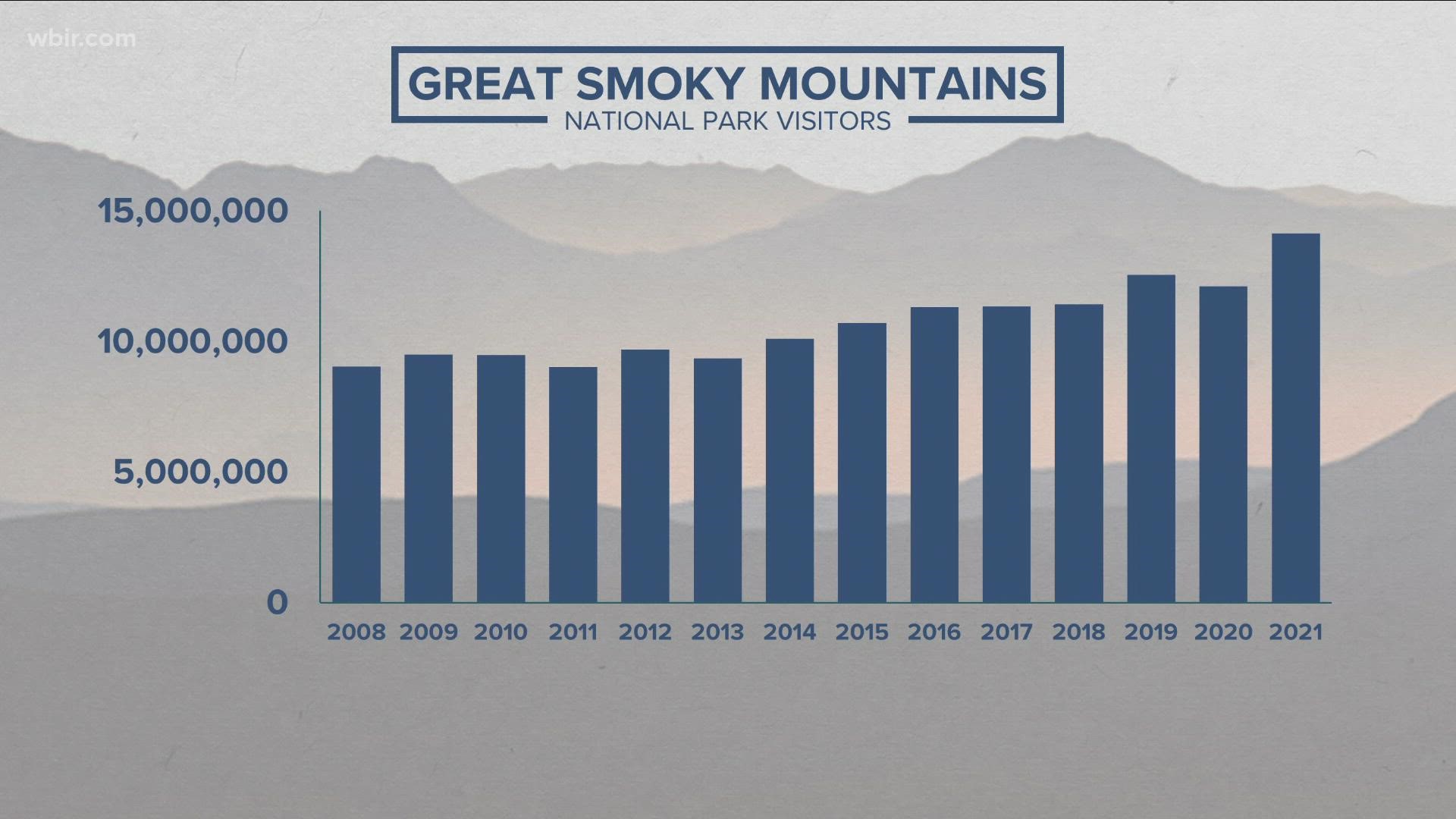Great Smoky Mountains Natl. Park — The Great Smoky Mountains National Park has seen several busy years since the start of the COVID-19 pandemic, as more people flocked to the natural beauty of the mountains.
Officials said they set a new visitation record in 2021 with 14,137,812 visits. It marked their busiest year yet, according to officials, and exceeded the 2019 record by around 1.5 million visits.
"That extreme visitation is inspiring, but it's also daunting," said Dana Soehn, a spokesperson for the Great Smoky Mountains National Park. "It presents some very real challenges."
She said having more people in the mountains tends to bring more problems.
"We are experiencing more congestion, more resource impacts and more wear and tear in our facilities," Soehn said. "We simply can't take care of this park by ourselves."
That's where partner organizations like Friends of the Smokies come in.
"The park is free to visit, but it's not free to operate," said Tim Chandler, CEO of Friends of the Smokies. "Donors who give directly to the Friends of Smokies, that money goes back to the park each year for all the different projects inside the park."
Officials at the park also said it became a year-round destination for many people, with eight monthly visitation records set during winter and spring 2021. However, the months with the most visitors were in summer and fall, with peaks in July and October.
“In the last decade, park visitation has increased by 57%,” said Alan Sumeriski, the park's acting superintendent. “While increasing visitation presents complex challenges, we are honored to care for a park that is special to so many people."
Front-country camping also increased by around 40% in the Great Smoky Mountains, while backcountry camping also increased by 20% in 2021.
While more people may be flocking to the mountains, operational costs are also rising, according to officials. To help the mountains meet critical needs, Friends of the Smokies and the Great Smoky Mountains Association provided more than $4 million.
"Most of those systems were put in place in the 1960s when our visitation was at about 5 million people," Soehn said. "Trying to provide that level of service with the same infrastructure for now 14 million visits is pretty daunting."
Officials also said the park will receive project-specific, short-term funds to help get through some of the maintenance backlogs in campgrounds, wastewater systems, trails and roads.

